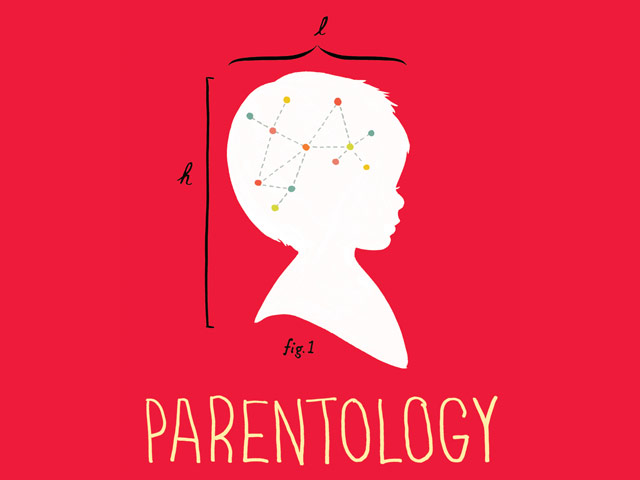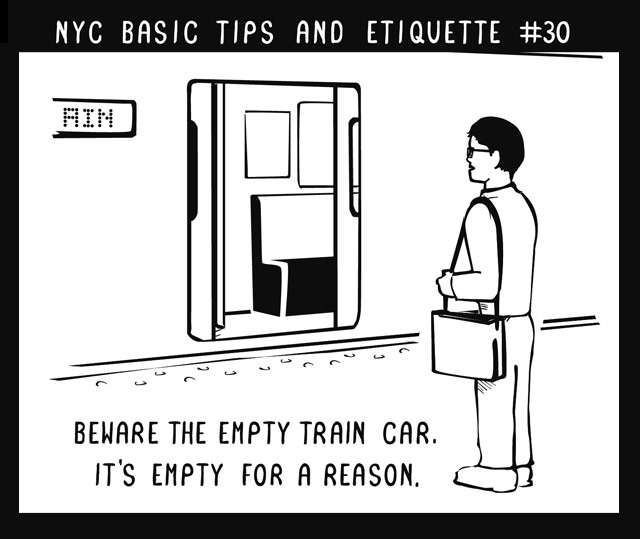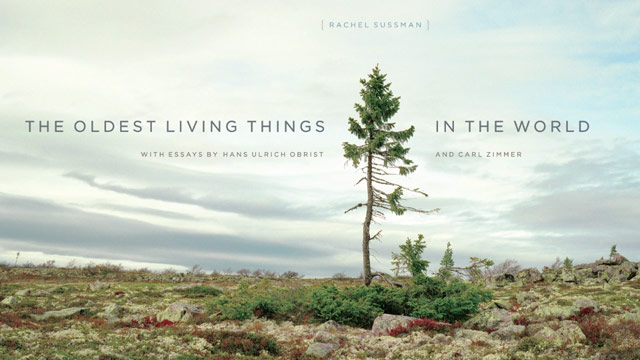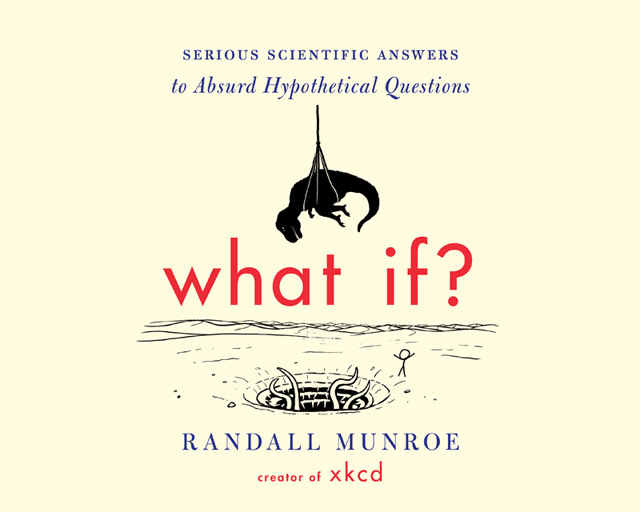kottke.org posts about books
Internet mega-retailer Amazon is trying, mob-style, to pressure Hachette for better terms on ebooks by disappearing the publisher’s book from amazon.com.
The retailer began refusing orders late Thursday for coming Hachette books, including J.K. Rowling’s new novel. The paperback edition of Brad Stone’s “The Everything Store: Jeff Bezos and the Age of Amazon” — a book Amazon disliked so much it denounced it — is suddenly listed as “unavailable.”
In some cases, even the pages promoting the books have disappeared. Anne Rivers Siddons’s new novel, “The Girls of August,” coming in July, no longer has a page for the physical book or even the Kindle edition. Only the audio edition is still being sold (for more than $60). Otherwise it is as if it did not exist.
No question about it: this sucks on Amazon’s part and demonstrates the degree to which the company’s top priority isn’t customer service. Better customer service in this case would be to offer these books for sale. I noticed another less nefarious instance of this the other day: because Amazon is offering a streaming version of The Lego Movie (which presumably has a high profit margin), they are not currently taking pre-orders of the The Lego Movie Blu-ray (out on June 17), even though Barnes and Noble has it for pre-order and Amazon has no problem offering for pre-order a Blu-ray of The Nutty Professor that isn’t out until September. I guess it makes sense to drive sales to the high-margin streaming offering but not letting people pre-order what is likely to be a very popular Blu-ray is baffling.
Anyway, if this trend continues, I’d look for Amazon to start more aggressively promoting the Kindle editions of books, to the point of manipulating available inventory as with Hachette. That is, if they’re not doing it already.

No idea if this is for sale anywhere (I couldn’t find it) or if it’s just a design exercise, but this cover for Peter Benchley’s Jaws designed by Tom Lenartowicz is inspired. (via ★interesting)

This may be the strangest parenting book I’ve ever come across: Parentology by Dalton Conley, a sociologist at NYU. In an interview with Freakonomics, Conley explains what makes his parenting approach so unconventional:
As an immigrant society with no common culture, we Americans have always made things up as we go — be it baseball, jazz or the Internet. Parenting is no different, whether we admit it or not. If we want to keep producing innovative kids who can succeed in today’s global economy, we should be constantly experimenting on them.
For example, I read the latest research on allergies and T-cell response and then intentionally exposed my kids to raw sewage (in small doses, of course) to build up their immune systems. I bribed them to do math thanks to an experiment involving Mexican villagers that demonstrated the effectiveness of monetary incentives for schooling outcomes. I perused a classic study suggesting that confidence-boosting placebos improved kids’ actual cognitive development, fed my kids vitamins before an exam, told them that they were amphetamines — and watched their scores soar.
And in this excerpt of the book from Salon, Conley explains why he and his wife named their kids E and Yo.
Unlike having fewer kids, birthing them in the Northern Hemisphere during October of a year when not many others are having kids, avoiding the mercury in fish (while still getting enough omega-3 and omega-9 fatty acids), and being rich, well-educated, and handsome to boot, there is one thing you can bequeath your kids that is entirely within your control. I’m talking about selecting their names. We may not control what race or gender we bequeath our offspring (unless, of course, we are utilizing a sperm bank in the Empire State Building for IVF), but we do have say over their names. If you play it safe with Bill or Lisa, it probably means your kids will be marginally more likely to avoid risk, too. If you’re like us and name them E or Yo, they are likely to grow up into weirdoes like their parents-or at least not work in middle management.
Early studies on names claimed that folks with strange ones were overrepresented in prisons and mental hospitals. But the more recent (and in my professional opinion, better) research actually comes to the opposite conclusion: Having a weird name makes you more likely to have impulse control since you get lots of practice biting your tongue when bigger, stronger, older kids make fun of you in the schoolyard. This study makes me happy, given the growing scientific literature around the extreme importance of impulse control and its close cousin, delayed gratification. These two, some argue, are even more important than raw IQ in predicting socioeconomic success, marital stability, and even staying out of prison.
Mark Frauenfelder of Boing Boing and Make Magazine recently published Maker Dad, a book full of father-daughter DIY projects. I haven’t dug too far into my copy yet, but the projects seem appropriate for kids and parents of all genders.
As the editor in chief of MAKE magazine, Mark Frauenfelder has spent years combing through DIY books, but he’s never been able to find one with geeky projects he can share with his two daughters. Maker Dad is the first DIY book to use cutting-edge (and affordable) technology in appealing projects for fathers and daughters to do together. These crafts and gadgets are both rewarding to make and delightful to play with. What’s more, Maker Dad teaches girls lifelong skills-like computer programming, musicality, and how to use basic hand tools-as well as how to be creative problem solvers.
Projects run the gamut from “Easy and Quick” to “Challenging” and include silkscreening tshirts, a lunch box guitar, custom rubber stamps, and programming in Scratch.
In Stung! On Jellyfish Blooms and the Future of the Ocean, Lisa-ann Gershwin argues that the jellyfish are coming on, and they’re coming on strong.
If I offered evidence that jellyfish are displacing penguins in Antarctica — not someday, but now, today — what would you think? If I suggested that jellyfish could crash the world’s fisheries, outcompete the tuna and swordfish, and starve the whales to extinction, would you believe me?
This New York Review of Books review of Stung! by Tim Flannery is well worth a read, with fascinating bits throughout.
The question of jellyfish death is vexing. If jellyfish fall on hard times, they can simply “de-grow.” That is, they reduce in size, but their bodies remain in proportion. That’s a very different outcome from what is seen in starving fish, or people. And when food becomes available again, jellyfish simply recommence growing. Some individual jellyfish live for a decade. But the polyp stage survives pretty much indefinitely by cloning. One polyp colony started in 1935 and studied ever since is still alive and well in a laboratory in Virginia.
One kind of jellyfish, which might be termed the zombie jelly, is quite literally immortal. When Turritopsis dohrnii “dies” it begins to disintegrate, which is pretty much what you expect from a corpse. But then something strange happens. A number of cells escape the rotting body. These cells somehow find each other, and reaggregate to form a polyp. All of this happens within five days of the jellyfish’s “death,” and weirdly, it’s the norm for the species. Well may we ask of this astonishing creature, “Sting, where is thy death?”
(via phil gyford)
From Grantland, an excerpt from Console Wars, a new book by Blake J. Harris about the video game console battles of the 1990s between Nintendo and Sega. The excerpt is about the rise of Nintendo.
And just like that, the North American videogame industry ground to a halt. Hardware companies (like Atari) went bankrupt, software companies (like Sega) were sold for pennies on the dollar, and retailers (like Sears) vowed never to go into the business again. Meanwhile, Nintendo quietly glided through the bloody waters on a gorilla-shaped raft. The continuing cash flow from Donkey Kong enabled Arakawa, Stone, Judy, and Lincoln to dream of a new world order, one where NOA miraculously resurrected the industry and Nintendo reigned supreme. Not now, perhaps, but one day soon.
Harris is also working on a documentary based on the book. And Sony is making a “feature-film” adaptation of the book as well. Cool!
Update: Medium has another excerpt from the book.
Maybe this Sonic could sell in Japan, but in America he belonged inside a nightmare.
Kalinske got off the phone with Nakayama and took the fax to Madeline Schroeder’s office. “I have good news and I have scary news.” He handed her the artwork. “What do you think?”
She looked it over. “I think we’ll be the first videogame company whose core demographic is goths.”
“Nakayama loves it.”
“Of course he does,” she said. “It’s so weirdly Japanese. I’m surprised the girlfriend’s boobs aren’t hanging out of a schoolgirl outfit.”
Despite his sour mood, Kalinske laughed. “Her name is Madonna.”
Schroeder put the drawing on the desk. After a long silent inspection they both spoke at the same time, saying the exact same thing: “Can you fix it?”
This is odd: Gary Stewart has written a book about the search for his biological father and through the process discovered his father is the still-uncaught Zodiac Killer. The book’s description promises new “forensic evidence”.
An explosive and historic book of true crime and an emotionally powerful and revelatory memoir of a man whose ten-year search for his biological father leads to a chilling discovery: His father is one of the most notorious-and still at large-serial killers in America.
Soon after his birth mother contacted him for the first time at the age of thirty-nine, adoptee Gary L. Stewart decided to search for his biological father. It was a quest that would lead him to a horrifying truth and force him to reconsider everything he thought he knew about himself and his world.
The book is out today and was kept secret until yesterday. This sounds about as plausible as Jesus’s wife, but who knows?
Steven Levitt and Stephen Dubner, the co-authors of the immensely popular Freakonomics, are back with their third book in the series: Think Like a Freak. In it, rather than discussing what they think, they talk about how they think.
Levitt and Dubner offer a blueprint for an entirely new way to solve problems, whether your interest lies in minor lifehacks or major global reforms. As always, no topic is off-limits. They range from business to philanthropy to sports to politics, all with the goal of retraining your brain. Along the way, you’ll learn the secrets of a Japanese hot-dog-eating champion, the reason an Australian doctor swallowed a batch of dangerous bacteria, and why Nigerian e-mail scammers make a point of saying they’re from Nigeria.
The book is out on May 12, but of course you can preorder, etc.
Update: Excerpt in the WSJ.
Peter Bach, a cancer doctor, writes about losing his wife to cancer.
The streetlights in Buenos Aires are considerably dimmer than they are in New York, one of the many things I learned during my family’s six-month stay in Argentina. The front windshield of the rental car, aged and covered in the city’s grime, further obscured what little light came through. When we stopped at the first red light after leaving the hospital, I broke two of my most important marital promises. I started acting like my wife’s doctor, and I lied to her.
I had just taken the PET scan, the diagnostic X-ray test, out of its manila envelope. Raising the films up even to the low light overhead was enough for me to see what was happening inside her body. But when we drove on, I said, “I can’t tell; I can’t get my orientation. We have to wait to hear from your oncologist back home.” I’m a lung doctor, not an expert in these films, I feigned. But I had seen in an instant that the cancer had spread.
The last sentence here really got to me:
Our life together was gone, and carrying on without her was exactly that, without her. I was reminded of our friend Liz’s insight after she lost her husband to melanoma. She told me she had plenty of people to do things with, but nobody to do nothing with.
Bach’s discussion of treatment options reminded me of Siddhartha Mukherjee’s The Emperor of All Maladies, which is one of my favorite books of recent years. I was also reminded of how doctors die.
From the editors of The American Scholar, the ten best sentences. Presumably in all of literature? Here’s one of them, from James Joyce’s A Portrait of the Artist as a Young Man:
I go to encounter for the millionth time the reality of experience and to forge in the smithy of my soul the uncreated conscience of my race.
Why are these the ten best sentences?
Homer Economicus is a new book which uses the fictional world of Springfield on The Simpsons to explain the basic concepts of economics.
Since The Simpsons centers on the daily lives of the Simpson family and its colorful neighbors, three opening chapters focus on individual behavior and decision-making, introducing readers to the economic way of thinking about the world. Part II guides readers through six chapters on money, markets, and government. A third and final section discusses timely topics in applied microeconomics, including immigration, gambling, and health care as seen in The Simpsons. Reinforcing the nuts and bolts laid out in any principles text in an entertaining and culturally relevant way, this book is an excellent teaching resource that will also be at home on the bookshelf of an avid reader of pop economics.
(via mr)
Photographer David Liittschwager captured the little ecosystem of life contained in a splash of seawater magnified 25 times:

It’s the microscopic equivalent of the Hubble Deep Field image and worth seeing larger. Here’s part of the larger image:

Liittschwager took the photo for National Geographic, but it also might be contained in his book, A World in One Cubic Foot, in which he took photos in locations all over the world of the life that passed through 1 cubic foot of space in 24 hours.
For A World in One Cubic Foot, esteemed nature photographer David Liittschwager took a bright green metal cube-measuring precisely one cubic foot-and set it in various ecosystems around the world, from Costa Rica to Central Park. Working with local scientists, he measured what moved through that small space in a period of twenty-four hours. He then photographed the cube’s setting and the plant, animal, and insect life inside it — anything visible to the naked eye. The result is a stunning portrait of the amazing diversity that can be found in ecosystems around the globe.
Prints of this image are available at Art.com in sizes up to 64”x48”. (via colossal)
I really liked this bit from Rolling Stone’s interview with Game of Thrones writer George R.R. Martin:
Ruling is hard. This was maybe my answer to Tolkien, whom, as much as I admire him, I do quibble with. Lord of the Rings had a very medieval philosophy: that if the king was a good man, the land would prosper. We look at real history and it’s not that simple. Tolkien can say that Aragorn became king and reigned for a hundred years, and he was wise and good. But Tolkien doesn’t ask the question: What was Aragorn’s tax policy? Did he maintain a standing army? What did he do in times of flood and famine? And what about all these orcs? By the end of the war, Sauron is gone but all of the orcs aren’t gone — they’re in the mountains. Did Aragorn pursue a policy of systematic genocide and kill them? Even the little baby orcs, in their little orc cradles?
(via mr)
Last week, I noted on Twitter that a 700-page academic book by a French economist topped the best sellers list on Amazon. Well, Thomas Piketty’s Capital in the Twenty-First Century is still #1 on Amazon, even though the hardcover is currently out of stock. If you’re curious about this anti-Kardashian moment in our culture but don’t want to dive in fully, you can read the book’s introduction on Harvard University Press’s site.
The distribution of wealth is one of today’s most widely discussed and controversial issues. But what do we really know about its evolution over the long term? Do the dynamics of private capital accumulation inevitably lead to the concentration of wealth in ever fewer hands, as Karl Marx believed in the nineteenth century? Or do the balancing forces of growth, competition, and technological progress lead in later stages of development to reduced inequality and greater harmony among the classes, as Simon Kuznets thought in the twentieth century? What do we really know about how wealth and income have evolved since the eighteenth century, and what lessons can we derive from that knowledge for the century now under way?
Or you can try Vox’s short guide to Capital or HBR’s Capital in a Lot Less than 696 Pages.
It is massive (696 pages) and massively ambitious (the title is a very conscious echo of Karl Marx’s Das Kapital). It came out in France last year to great acclaim, which meant that those in the English-speaking world who pay attention to such matters knew that something big was coming. Over the past few weeks it has become one of those things that everybody’s talking about just because everybody’s talking about it. That, and it really is important.
Is it worth reading? Martin Wolf of the Financial Times called it “enthralling”; a couple people I know have described it as “a slog.” I’d liken it to a big river — muddy and occasionally meandering, but with a powerful current that keeps pulling you along, plus lots of interesting sights along the way. There are endless numbers and (ugly but generally understandable) charts, but also frequent references to the novels of Balzac and Austen, and even a brief analysis of Disney’s The Aristocats. Regular people can read this thing; it’s just a matter of the time commitment. You should definitely buy it, if your place on the income distribution allows it. It looks good on a bookshelf, plus every copy sold makes Piketty wealthier, allowing us to discover whether this alters his views about inequality.

In his cookbook, Tartine Bread, Chad Robertson lays out, over 38 pages, the recipe for what might be the best bread in the world. The first time through, the recipe takes two weeks to make.
To Chad, bread is the foundation of a meal, the center of daily life, and each loaf tells the story of the baker who shaped it. He developed his unique bread over two decades of apprenticeship with the finest artisan bakers in France and the United States, as well as experimentation in his own ovens.
A streamlined version of the recipe is available from the NY Times. (via smithsonian)
Letters of Note, which I’ve featured on kottke.org many times, is coming out with a book, which collects some of the site’s best and most memorable letters.
This spectacular collection of more than 125 letters offers a never-before-seen glimpse of the events and people of history — the brightest and best, the most notorious, and the endearingly everyday. Entries include a transcript of the letter; a short contextual introduction; and, in 100 cases, a captivating facsimile of the letter itself.
A UK version has been available since last year and the US version will be out on May 6.

Nathan Pyle has written and illustrated a book about the unwritten rules for how to behave on the streets of NYC. It’s called NYC Basic Tips and Etiquette (only $6!).
In NYC Basic Tips and Etiquette, Pyle reveals the secrets and unwritten rules for living in and visiting New York including the answers to such burning questions as, how do I hail a cab? What is a bodega? Which way is Uptown? Why are there so many doors in the sidewalk? How do I walk on an escalator? Do we need be touching right now? Where should I inhale or exhale while passing sidewalk garbage? How long should I honk my horn? If New York were a game show, how would I win? What happens when I stand in the bike lane? Who should get the empty subway seats? How do I stay safe during a trash tornado?
In support of the book, Pyle animated a few of the tips and put them on Imgur. Also, the Apple ebook contains the animated versions of the illustrations. You fancy!

The very first Kickstarter campaign I ever backed was Rachel Sussman’s project to photograph the oldest living organisms in the world.
I’m researching, working with biologists, and traveling all over the world to find and photograph continuously living organisms that are 2,000 years old and older. I started the project 5 years ago, and have since photographed nearly 25 different organisms, ranging from the Bristlecone Pine and Giant Sequoias that you’ve surely heard of, to some truly unusual and unique desert shrubs, bacteria, a predatory fungus, and a clonal colony of Aspen trees that’s male and, in theory, immortal.
Her goal was to compile the photographs into a book. Almost four years later, the book is out. Looks like it was worth the wait. The trailer does a nice job explaining what the book is all about:

New from Michael Ruhlman: a cookbook about the mighty egg, “A Culinary Exploration of the World’s Most Versatile Ingredient”.
For culinary visionary Michael Ruhlman, the question is not whether the chicken or the egg came first, it’s how anything could be accomplished in the kitchen without the magic of the common egg. He starts with perfect poached and scrambled eggs and builds up to brioche and Italian meringue. Along the way readers learn to make their own mayonnaise, pasta, custards, quiches, cakes, and other preparations that rely fundamentally on the hidden powers of the egg.
Ruhlman shares a bit about the book with NPR:
But often, Ruhlman argues, we don’t treat our eggs very well. Take scrambled eggs. “It’s one of the most overcooked dishes in America,” he says. “We kill our eggs with heat.”
Instead, we need, in most instances, to give the egg gentle heat. “When you cook them very slowly over very gentle heat, the curds form. And as you sit, the rest of the egg sort of warms but doesn’t fully cook and becomes a sauce for the curds. So it should be a creamy and delicious and delicate preparation.”

The Vatican is beginning the process of digitizing its extensive library of books and manuscripts, previously only available to a select few scholars and historians. Their plan calls for an initial 3000 manuscripts to be scanned, with the rest of the 82,000 other documents to hopefully follow.
That’s 41 million pages spanning nearly 2,000 years of church history that will soon be clickable, zoomable, and presumably, printable. When all is said and done, you’ll be able to read the Psalms handwritten across 13th-century vellum on your iPhone — so long as you speak ancient Greek.
Mason Currey’s book about the daily routines of scientists, painters, writers, and other creative people looks interesting. Sarah Green collected a list of common practices among some of the book’s “healthier geniuses”.
A workspace with minimal distractions. Jane Austen asked that a certain squeaky hinge never be oiled, so that she always had a warning when someone was approaching the room where she wrote. William Faulkner, lacking a lock on his study door, just detached the doorknob and brought it into the room with him — something of which today’s cubicle worker can only dream. Mark Twain’s family knew better than to breach his study door — if they needed him, they’d blow a horn to draw him out. Graham Greene went even further, renting a secret office; only his wife knew the address or telephone number. Distracted more by the view out his window than interruptions, if N.C. Wyeth was having trouble focusing, he’d tape a piece of cardboard to his glasses as a sort of blinder.
I love reading about people’s workspaces; here’s an old post about George Bernard Shaw’s rotating writing room. (via myself apparently?)
Michael Lewis’s new book about high-frequency trading dropped on Monday with less than 24 hours notice and the media is scrambling to catch up. There’s plenty of love for Lewis and his books out there, but Tyler Cowen has been linking to some critiques. For Bloomberg, Matt Levine writes:
In my alternative Michael Lewis story, the smart young whippersnappers build high-frequency trading firms that undercut big banks’ gut-instinct-driven market making with tighter spreads and cheaper trading costs. Big HFTs like Knight/Getco and Virtu trade vast volumes of stock while still taking in much less money than the traditional market makers: $688 million and $623 million in 2013 market-making revenue, respectively, for Knight and Virtu, versus $2.6 billion in equities revenue for Goldman Sachs and $4.8 billion for J.P. Morgan. Even RBC made 594 million Canadian dollars trading equities last year. The high-frequency traders make money more consistently than the old-school traders, but they also make less of it.
And here’s Matthew Philips on What Michael Lewis Gets Wrong About High-Frequency Trading:
1. HFT doesn’t prey on small mom-and-pop investors. In his first two TV appearances, Lewis stuck to a simple pitch: Speed traders have rigged the stock market, and the biggest losers are average, middle-class retail investors-exactly the kind of people who watch 60 Minutes and the Today show. It’s “the guy sitting at his ETrade account,” Lewis told Matt Lauer. The way Lewis sees it, speed traders prey on retail investors by “trading against people who don’t know the market.”
The idea that retail investors are losing out to sophisticated speed traders is an old claim in the debate over HFT, and it’s pretty much been discredited. Speed traders aren’t competing against the ETrade guy, they’re competing with each other to fill the ETrade guy’s order.
And Felix Salmon:
This vagueness about time is one of the weaknesses of the book: it’s hard to keep track of time, and a lot of it seems to be an exposé not of high-frequency trading as it exists today, but rather of high-frequency trading as it existed during its brief heyday circa 2008. Lewis takes pains to tell us what happened to the number of trades per day between 2006 and 2009, for instance, but doesn’t feel the need to mention what has happened since then. (It is falling, quite dramatically.) The scale of the HFT problem - and the amount of money being made by the HFT industry - is in sharp decline: there was big money to be made once upon a time, but nowadays it’s not really there anymore. Because that fact doesn’t fit Lewis’s narrative, however, I doubt I’m going to find it anywhere in his book.
Michael Lewis (The Big Short, Liar’s Poker) is back with another book about the financial markets: Flash Boys: A Wall Street Revolt. It’s the story of high-frequency trading and the traders who are fighting against it.
Flash Boys is about a small group of Wall Street guys who figure out that the U.S. stock market has been rigged for the benefit of insiders and that, post-financial crisis, the markets have become not more free but less, and more controlled by the big Wall Street banks. Working at different firms, they come to this realization separately; but after they discover one another, the flash boys band together and set out to reform the financial markets. This they do by creating an exchange in which high-frequency trading-source of the most intractable problems-will have no advantage whatsoever.
The characters in Flash Boys are fabulous, each completely different from what you think of when you think “Wall Street guy.” Several have walked away from jobs in the financial sector that paid them millions of dollars a year. From their new vantage point they investigate the big banks, the world’s stock exchanges, and high-frequency trading firms as they have never been investigated, and expose the many strange new ways that Wall Street generates profits.
From a Bloomberg article about the book:
His latest target, high-frequency trading, comprises a diverse set of software-driven strategies that have spread from U.S. equity markets to most developed countries as computer power grew and regulators tried to break the grip of centralized exchanges. While the tactics vary, they usually employ super-fast computers to post and cancel orders at rates measured in thousandths or even millionths of a second to capture price discrepancies on more than 50 public and private venues that make up the American equities market.
I don’t know too much about it but from what I’ve read, high-frequency trading seems to involve huge Wall Street banks using the Office Space/Richard-Pryor-in-Superman-III trick of shaving fractions of a penny off of trillions of trades every year, except that it’s perfectly legal. The NY Times has an excerpt of the book to further whet your appetite.
Looking forward to this one: a cocktail recipe book from Death & Co, an East Village cocktail joint.
Featuring hundreds of recipes for signature Death & Co creations as well as classic drink formulas,Death & Co is not only a comprehensive collection of the bar’s best, but also a complete cocktail education. With chapters on the theory and philosophy of drink-making; a complete guide to the spirits, tools, and other ingredients needed to make a great bar; and specs for nearly 500 iconic drinks, Death & Co is destined to become the go-to reference on craft cocktails.

Kate Ascher, author of the great The Works: Anatomy of a City, has a new book out about transportation. The Way to Go explores how global transportation works, from how car engines work to the ocean routes travelled by huge cargo ships. Slate has an excerpt.
Focusing on the machines that underpin our lives, Ascher’s The Way to Go also introduces the systems that keep those machines in business — the emergency communication networks that connect ships at sea, the automated tolling mechanisms that maintain the flow of highway traffic, the air control network that keeps planes from colliding in the sky. Equally fascinating are the technologies behind these complex systems: baggage tag readers that make sure people’s bags go where they need to; automated streetlights that adjust their timing based on traffic flow; GPS devices that pinpoint where we are on earth at any second. Together these technologies move more people farther, faster, and more cheaply than at any other time in history.
Ordered. The kids are going to love this one…it’s like a more grown-up version of Richard Scarry’s Cars and Trucks and Things That Go.
Ed Catmull has written a book about Pixar’s creative process: Creativity, Inc.
Creativity, Inc. is a book for managers who want to lead their employees to new heights, a manual for anyone who strives for originality, and the first-ever, all-access trip into the nerve center of Pixar Animation — into the meetings, postmortems, and “Braintrust” sessions where some of the most successful films in history are made. It is, at heart, a book about how to build a creative culture — but it is also, as Pixar co-founder and president Ed Catmull writes, “an expression of the ideas that I believe make the best in us possible.”
For nearly twenty years, Pixar has dominated the world of animation, producing such beloved films as the Toy Story trilogy, Monsters, Inc., Finding Nemo, The Incredibles, Up, and WALL-E, which have gone on to set box-office records and garner thirty Academy Awards. The joyousness of the storytelling, the inventive plots, the emotional authenticity: In some ways, Pixar movies are an object lesson in what creativity really is. Here, in this book, Catmull reveals the ideals and techniques that have made Pixar so widely admired — and so profitable.
Catmull was a founder of Pixar and while he never got the press Jobs and Lasseter did, he was instrumental in the company’s success and is currently president of both Disney and Pixar’s animation studios. Fast Company has an excerpt of the book.
Candor could not be more crucial to our creative process. Why? Because early on, all of our movies suck. That’s a blunt assessment, I know, but I choose that phrasing because saying it in a softer way fails to convey how bad the first versions really are. I’m not trying to be modest or self-effacing. Pixar films are not good at first, and our job is to make them so — to go, as I say, “from suck to not-suck.”
Think about how easy it would be for a movie about talking toys to feel derivative, sappy, or overtly merchandise driven. Think about how off-putting a movie about rats preparing food could be, or how risky it must’ve seemed to start WALL-E with 39 dialogue-free minutes. We dare to attempt these stories, but we don’t get them right on the first pass. This is as it should be. Creativity has to start somewhere, and we are true believers in the power of bracing, candid feedback and the iterative process — reworking, reworking, and reworking again, until a flawed story finds its through line or a hollow character finds its soul.

National Geographic photographer Gerd Ludwig has visited Chernobyl nine times over the past twenty years. The Long Shadow of Chernobyl is a forthcoming book collecting Ludwig’s photos, which includes an essay by Mikhail Gorbachev. The publication of the book is being funded via Kickstarter. There is also an iOS app.
Shane Parrish’s excerpt and exploration of Paul Tough’s How Children Succeed: Grit, Curiosity, and the Hidden Power of Character made me want to stop everything and read the book all the way through.
“Tell me about your game,” Spiegel said. Sebastian flopped into the chair and handed her his notepad, where he’d recorded all the moves for both players in the game.
Sebastian explained that the other guy was simply better. “He had good skills,” he said. “Good strategies.”
And this is the point where many of us would simply say something along the lines of “did you do your best?,” in which case the likely response is “Yes.” Everyone is at least let off the hook. The teacher for ensuring students try their best, the student for having lost to someone better. Spiegel did not take this approach.
You may remember Tough’s 2011 piece on grit in the NY Times Magazine.
The most critical missing piece, Randolph explained as we sat in his office last fall, is character — those essential traits of mind and habit that were drilled into him at boarding school in England and that also have deep roots in American history. “Whether it’s the pioneer in the Conestoga wagon or someone coming here in the 1920s from southern Italy, there was this idea in America that if you worked hard and you showed real grit, that you could be successful,” he said. “Strangely, we’ve now forgotten that. People who have an easy time of things, who get 800s on their SAT’s, I worry that those people get feedback that everything they’re doing is great. And I think as a result, we are actually setting them up for long-term failure. When that person suddenly has to face up to a difficult moment, then I think they’re screwed, to be honest. I don’t think they’ve grown the capacities to be able to handle that.”

Fantastic…Randall Munroe is turning his What If? web series into a book. Munroe explains:
As I’ve sifted through the letters submitted to What If every week, I’ve occasionally set aside particularly neat questions that I wanted to spend a little more time on. This book features my answers to those questions, along with revised and updated versions of some of my favorite articles from the site. (I’m also including my personal list of the weirdest questions people have submitted.)
Update: What If? the book is now out. Phil Plait has a rave review.
Look, I answer questions for a living, too, and Randall is really, really good at this. He finds weird little scientific ways to answer the questions, but it’s his extrapolations that kill me. I laughed a lot reading this book. Even better: I learned stuff reading this book. And you will too.
When Owen Suskind was three, a switch flipped within him and he went from a typical chatty rambunctious three-year-old to autistic.
I had just started a job as The Wall Street Journal’s national affairs reporter. My wife, Cornelia, a former journalist, was home with him — a new story every day, a new horror. He could barely use a sippy cup, though he’d long ago graduated to a big-boy cup. He wove about like someone walking with his eyes shut. “It doesn’t make sense,” I’d say at night. “You don’t grow backward.” Had he been injured somehow when he was out of our sight, banged his head, swallowed something poisonous? It was like searching for clues to a kidnapping.
After visits to several doctors, we first heard the word “autism.” Later, it would be fine-tuned to “regressive autism,” now affecting roughly a third of children with the disorder. Unlike the kids born with it, this group seems typical until somewhere between 18 and 36 months — then they vanish. Some never get their speech back. Families stop watching those early videos, their child waving to the camera. Too painful. That child’s gone.
But a tenuous connection remained between Owen and his pre-autistic self: Disney movies. And through them, Owen slowly learns how to communicate with the outside world again.
So we join him upstairs, all of us, on a cold and rainy Saturday afternoon in November 1994. Owen is already on the bed, oblivious to our arrival, murmuring gibberish…. “Juicervose, juicervose.” It is something we’ve been hearing for the past few weeks. Cornelia thinks maybe he wants more juice; but no, he refuses the sippy cup. “The Little Mermaid” is playing as we settle in, propping up pillows. We’ve all seen it at least a dozen times, but it’s at one of the best parts: where Ursula the sea witch, an acerbic diva, sings her song of villainy, “Poor Unfortunate Souls,” to the selfish mermaid, Ariel, setting up the part in which Ursula will turn Ariel into a human, allowing her to seek out the handsome prince, in exchange for her voice.
When the song is over, Owen lifts the remote. Hits rewind.
“Come on, Owen, just let it play!” Walt moans. But Owen goes back just 20 seconds or so, to the song’s next-to-last stanza, with Ursula shouting:
Go ahead — make your choice!
I’m a very busy woman, and I haven’t got all day.
It won’t cost much, just your voice!
He does it again. Stop. Rewind. Play. And one more time. On the fourth pass, Cornelia whispers, “It’s not ‘juice.’ ” I barely hear her. “What?” “It’s not ‘juice.’ It’s ‘just’ … ‘just your voice’!”
I grab Owen by the shoulders. “Just your voice! Is that what you’re saying?!”
He looks right at me, our first real eye contact in a year. “Juicervose! Juicervose! Juicervose!”
Walt starts to shout, “Owen’s talking again!” A mermaid lost her voice in a moment of transformation. So did this silent boy. “Juicervose! Juicervose! Juicervose!” Owen keeps saying it, watching us shout and cheer. And then we’re up, all of us, bouncing on the bed. Owen, too, singing it over and over — “Juicervose!” — as Cornelia, tears beginning to fall, whispers softly, “Thank God, he’s in there.”
This is the best thing I’ve read in a month, so so heartbreaking and amazing. Just pre-ordered the book…can’t wait to read the full version.
Newer posts
Older posts

















Stay Connected